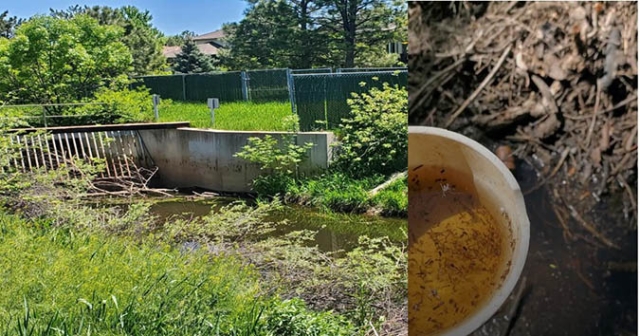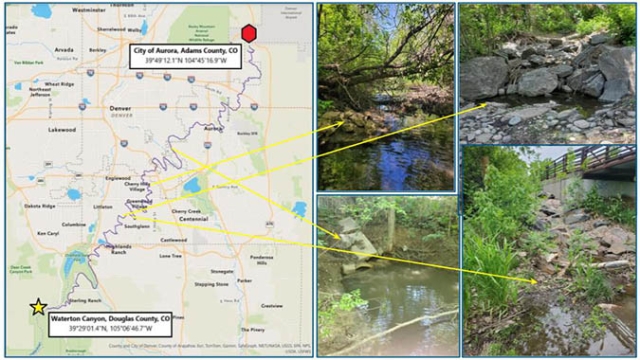Mosquitoes, Urban Wetlands and Colorado’s High Line Canal
Last summer, along with a team of dedicated volunteers and seasonal employees, I surveilled Colorado’s High Line Canal in search of urban wetland habitat and larval mosquitoes. We found plenty of both.

Left: A large stormwater culvert that controls the flow of water through a portion of the High Line Canal, providing water and habitat for wetland vegetation and aquatic macroinvertebrates.
Right: A small, secluded pool containing largely woody debris and a larval mosquito dip cup with many larval mosquitoes and pupae drawn from the pool below.
The High Line Canal is an enormous 71-mile habitat corridor that today serves as a series of urban wetland habitat fragments, catching and holding water in some locations, while remaining largely dry in others. As such, the canal is a great place to study mosquitoes within urban wetland habitat to contribute meaningful information to help manage these wetland fragments, inform green stormwater practices ongoing within the canal, and inform potential larval and adult mosquito control practices.
Our team measured a suite of habitat features and environmental conditions that we expected to shape mosquito distributions, including habitat size, sub-habitats (stands of emergent vegetation like cattails, piles of woody debris or rocks and cobbles), wetland vegetation, water depth, water temperature and light availability to relate to surveys of larval mosquitoes living within the canal.

Above: The High Line Canal provides a series of urban wetland habitat fragments that can support a large variety of wetland vegetation and aquatic macroinvertebrates, including larval mosquitoes.
We found and identified eight different species in the canal and located several wetland habitats within the canal that could be targeted for future larval mosquito control efforts. We found no clear preference in habitat type or condition for larval mosquitoes living in the canal beyond a simple need for available water that they can make use of at a variety of depths. It may be that the species of mosquitoes that we typically see along the Front Range are resilient enough to live within a wide range of possible habitats.

Above: A map showing the locations of 4 different genera (Aedes, Anopheles, Culex, Culiseta) of mosquitoes and 8 different species identified at various locations along the length of the canal.
We hope that research concerning larval mosquitoes and other aquatic macroinvertebrates will continue to be performed in support of the High Line Canal as an ecological and recreational resource for much of the Denver metro area.
This article was contributed by Roy Rutherford, graduate student.
Add new comment